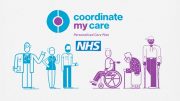As an industry that has historically been slow to innovate, the pandemic has dramatically accelerated technology adoption across the healthcare sector. IoT and wearables, AI for diagnosis, telemedicine, and even robotic surgery, are all digital trends that are set to grow in popularity as use cases increase and benefits for both staff and patients continue to unfold.
As well as the many advantages these technologies bring, however, there are also several pain points that have become apparent. The digital skills gap, as well as data privacy and security – all against the backdrop of the wider workforce crisis – are just a few of the main challenges that must be addressed and overcome before hospitals can continue their innovation journey.
How then can healthcare executives utilise the right technologies to ensure acceleration does not slow and digitising hospitals remains a priority?
Building cloud foundations
To underpin any digital transformation project, no matter how modest or ambitious, a robust foundation must be established at the outset. For some, this foundation may lie on premise, for others it may require a move to the cloud, or in some cases it may be a combination of the two.
The majority of key tech trends in healthcare, however, benefit from being built on a sound cloud-based architecture. This is particularly beneficial in hospital environments whereby countless data is being collected and stored.
Whether that data is coming from IoT sensors that are being used to track the location of medical equipment across different wards, being streamed by video platforms from virtual appointments, or coming from patient portals, it all needs to be recorded, stored, and accessed in the most efficient way.
Historically, public sector healthcare providers have been slower to move to the cloud than those in the private sector, mostly due to regulatory hurdles. This is something we can expect to see change in the remainder of 2023, as more trusts continue to embrace new technologies that are data-led and therefore readily supported by the cloud.
Never trust, always verify
Once you’ve taken the first step and know exactly where your data is, it’s crucial to secure it. Because the data collected through medical devices, apps, and other technologies used in hospitals and other healthcare environments is extremely sensitive, extra care needs to be taken to protect the data from hackers and malicious actors.
This all starts with mindset and adopting a Zero Trust approach to security. Instead of assuming whoever is trying to access data is safe, a Zero Trust model immediately assumes a breach and therefore verifies each request as though it originates from an open network. Access can then be granted based on contextual awareness using patterns based on time, identity, geolocation, and device.
With the rise of Electronic Health Records (EHR) and the push for enhanced data sharing, more and more healthcare providers and patients alike are concerned with the safety of data and the subsequent vulnerability to cyber attacks. Taking a ‘never trust, always verify’ approach to security provides the necessary confidence and reassurance, while ensuring staff and patients still have access to the information they need.
This is particularly important when it comes to finding the right balance between security and control. Hospitals and trusts must ensure they have full control over their data, whilst giving staff the freedom they need to continue to do their jobs effectively. Despite being a priority, security should not come at the cost of experience when it comes to sourcing and making the most of data.
Digitising hospitals a hybrid healthcare
With the right technology foundations in place, hospitals can begin to reap the benefits of a more digitised approach. Greater agility and data analytics capabilities from the cloud, and an enhanced security posture from the Zero Trust model. But it doesn’t stop there.
One key area the industry is also anticipating seeing positive results in is talent acquisition and retention. In fact, research from Deloitte revealed 20% of healthcare executives expect improved staff satisfaction and the ability to leverage alternative workforce models because of digitising hospitals.
Healthcare workers have been under tremendous pressure during the pandemic. Staff shortages due to illness – whether it be Covid or burnout – and funding cuts have all increased the pressure. With cloud-based technologies helping clinical staff work securely from anywhere with a unified experience, the industry is able to attract the best clinical talent, as well as tap into other talent pools in different parts of the country.
While the initial shift to the cloud requires time and investment, running operations (the digital, not medical kind) in a more technically robust environment goes a long way in helping to ease some of the pressures being felt across the health service.
Not only that, but in order to see the level of innovation patients expect and staff require, agility and flexibility must remain front of mind. Only then can hospitals – and the wider healthcare industry – continue on the digitising journey and plan for a digital-first future.
By Chris Smith, Regional Director, UK&I, Citrix





